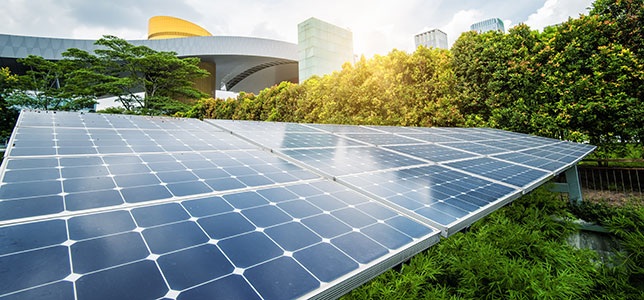Virtual HS Adds Solar Energy Design, Cryptography Classes
- By Dian Schaffhauser
- 03/29/17

High schoolers will have the chance to learn solar energy design, cryptography and chemistry in three new courses added to the offerings by the Virtual High School (VHS). VHS is a Massachusetts-based non-profit that offers online courses to students in any state and many countries for a fee.
The new classes being offered are all part of the summer school program, intended for credit recovery and enrichment.
The solar energy design course, intended for students in grades 9-12, allows learners to design a photovoltaic solar panel system for their own homes or another residential building. Using Energy3D, a computer-aided design and simulation tool, and Google Earth, they'll construct models, design an array and evaluate how the design meets the challenge of "maximizing electrical output while minimizing cost and aesthetic impact," according to the school. That class is four weeks long and begins in July and August.
In "Cryptography: The Math Behind Secret Messages," a four-week class intended for middle and high schoolers, students will learn how to use mathematical concepts to read and write secret messages through the application of classic ciphers, including the Caesar cipher and the Jefferson Wheel cipher. They'll also explore the historical impact of these ciphers on society to gain an understanding of the importance of code writing. This class also begins in July and August.
The chemistry class, intended for grades 9-12, lasts eight weeks. The course will allow students to perform hands-on experiments and share their data and conclusions with classmates. The course will also include weekly discussions that connect classroom topics to the real world. The program begins in July.
"The days of teaching STEM subjects by having students memorize facts and solve boring problem sets have passed," said Kim Spangenberg, associate dean of STEM at VHS, in a prepared statement. "By connecting complex math and science concepts to the real world, we can show students how truly interesting and relevant STEM subjects are, while planting the seeds for future career considerations."
In general, courses at VHS range from $135 to $425 per course, depending on a school’s level of participation.
About the Author
Dian Schaffhauser is a former senior contributing editor for 1105 Media's education publications THE Journal, Campus Technology and Spaces4Learning.